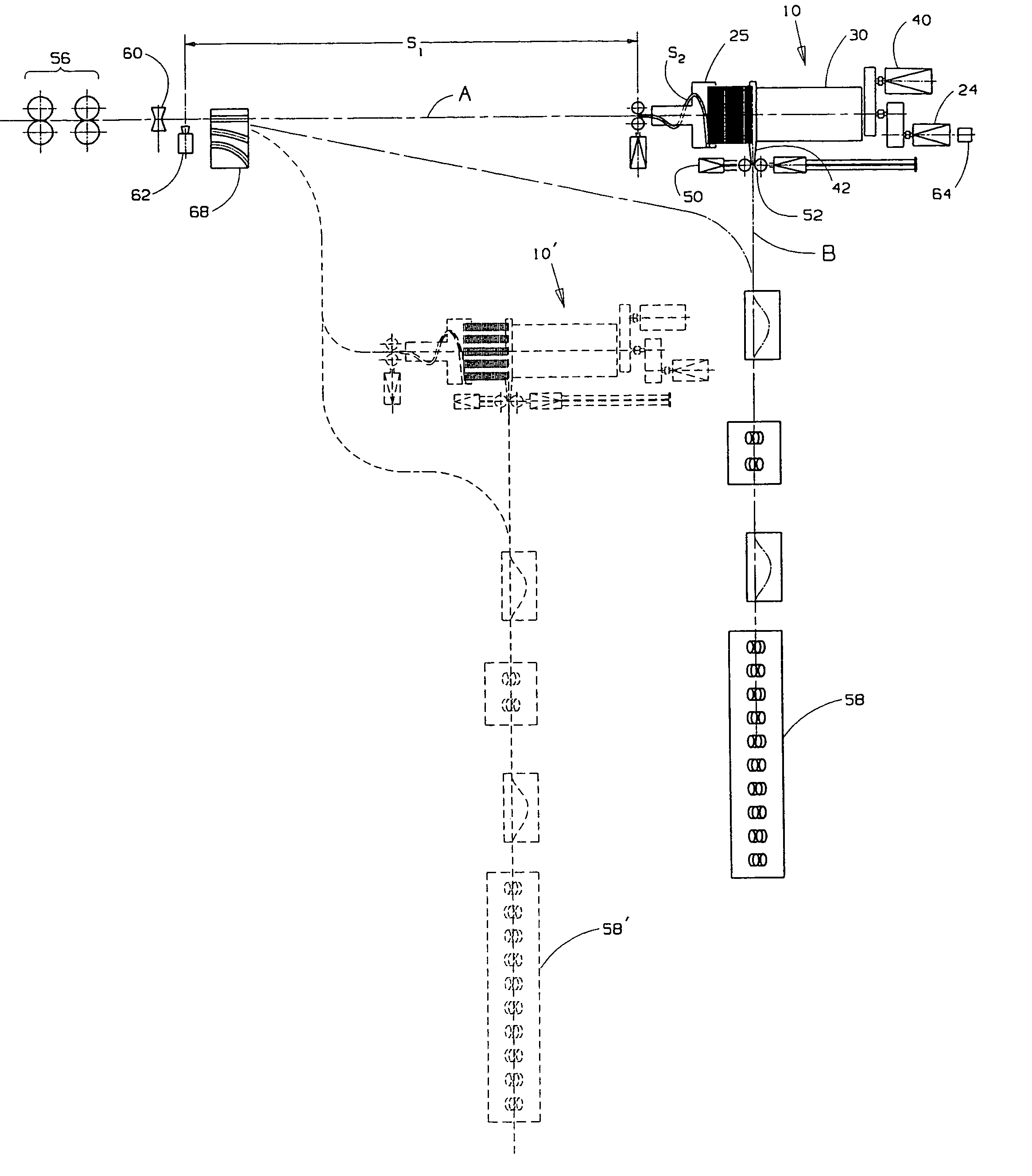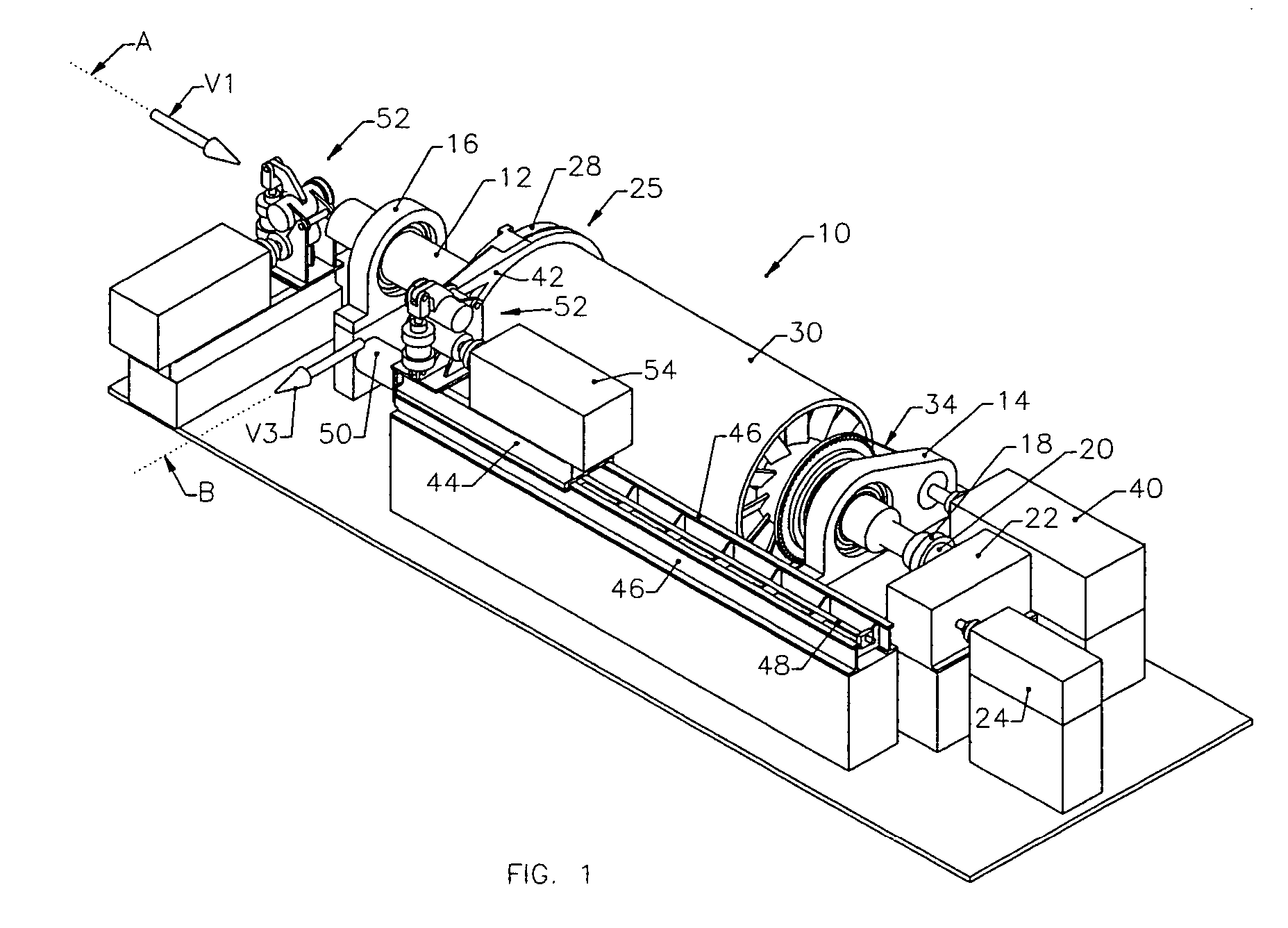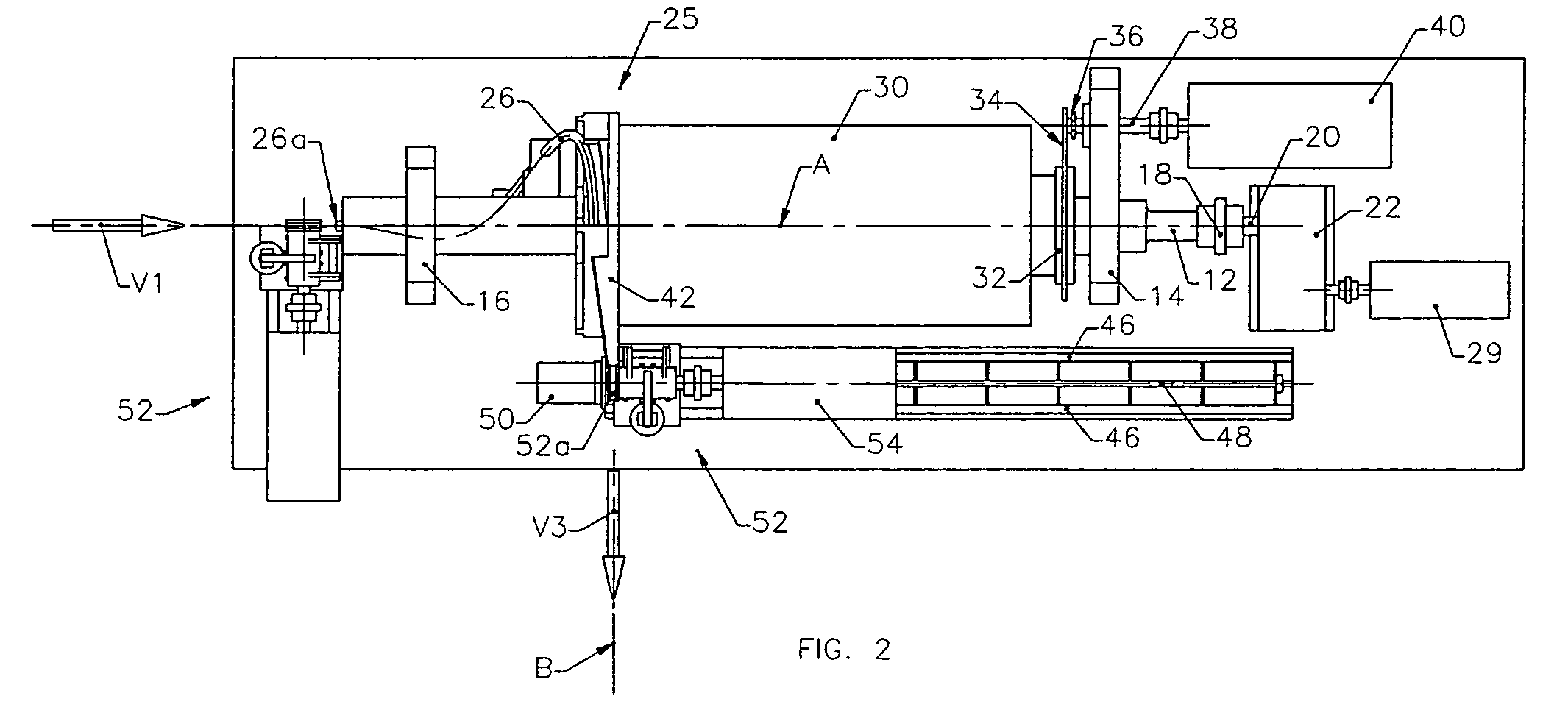Method and apparatus for decelerating and temporarily accumulating a hot rolled product
a technology of hot rolled products and deceleration, which is applied in the direction of flexible work arrangements, manufacturing tools, transportation and packaging, etc., can solve the problems of unacceptably low, fire cracking of work rolls, and becoming impractical
- Summary
- Abstract
- Description
- Claims
- Application Information
AI Technical Summary
Benefits of technology
Problems solved by technology
Method used
Image
Examples
Embodiment Construction
[0025]Referring initially to FIGS. 1–5, an apparatus in accordance with the present invention is generally depicted at 10 as comprising a laying head drive shaft 12 supported between bearings 14, 16 for rotation about a receiving axis A along which hot rolled product is received at a first velocity V1. One end of the drive shaft is coupled as at 18 to the output shaft 20 of a gear box 22, which in turn is driven by a motor 24.
[0026]The opposite end of the drive shaft is configured and arranged to support a curved laying assembly 25 comprising a laying pipe 26 and a helical trough extension 28.
[0027]As can best be seen in FIG. 6, the laying pipe has an entry end 26a aligned with the axis A to receive the hot rolled product, and a curved intermediate section 26b leading to an exit end 26c communicating with the entry end 28a of the helical trough 28. The exit end 28b of the trough is spaced radially from the axis A and oriented to deliver the product in an exit direction along an axis...
PUM
| Property | Measurement | Unit |
|---|---|---|
| length | aaaaa | aaaaa |
| diameter | aaaaa | aaaaa |
| speed | aaaaa | aaaaa |
Abstract
Description
Claims
Application Information
 Login to View More
Login to View More - R&D
- Intellectual Property
- Life Sciences
- Materials
- Tech Scout
- Unparalleled Data Quality
- Higher Quality Content
- 60% Fewer Hallucinations
Browse by: Latest US Patents, China's latest patents, Technical Efficacy Thesaurus, Application Domain, Technology Topic, Popular Technical Reports.
© 2025 PatSnap. All rights reserved.Legal|Privacy policy|Modern Slavery Act Transparency Statement|Sitemap|About US| Contact US: help@patsnap.com



